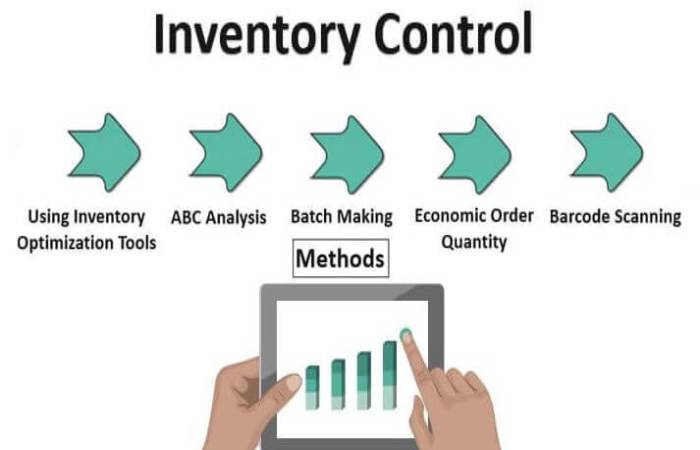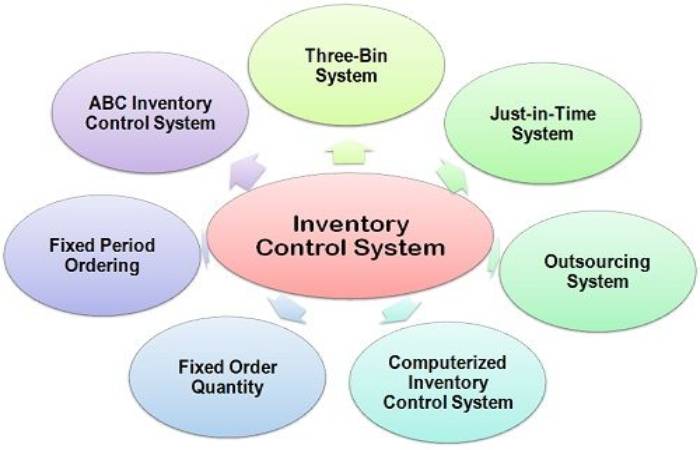valid for inventory control
Inventory control or stock control can remain broadly defined as “the activity of checking the stock of a shop. which of the following is valid for inventory control ” It is the process of ensuring that the right amount of supplies are available within a business.

When order size increases, ordering costs (purchasing, inspection, etc.) will decrease while inventory carrying costs (storage, insurance, etc.) will increase.
Inventory refers to all those goods, commodities, merchandise, and materials kept by a business to sell in the market to earn profit. Example: If a newspaper seller uses a vehicle to deliver newspapers to customers, only the newspaper will be considered inventory. The car will remain treated as an asset.
Table of Contents
Various Inventory Organization Models

Three of the most popular inventory organization models are Economic Order Quantity (EOQ), Inventory Production Quantity, and ABC Analysis. Each of the following is valid for inventory control Each inventory management model has an alternative way to help you figure out how much stock you should have available.
There are two significant types of inventory control systems.
Perpetual inventory system. A permanent inventory control system tracks inventory in real-time. ,
Periodic Inventory System. A regular inventory system is kept up to date by physical counting of the goods in hand at specific intervals.
When it comes to integrating the critical components of inventory control, here’s how an ERP software solution makes sense.
Processing time. For processing tasks, timing is critical.
Cost.
Availability.
Operation.
Data and Documentation.
Accurate Inventory Control Is the Cure for Warehouse Headaches
What is True Inventory Control? It means you have all the necessary tools and training to calculate accurately, receive, reorder and predict your inventory 1 in one warehouse or multiple locations. Fishbowl provides accurate inventory control, empowering you to bid farewell to the other headaches associated with Excel spreadsheets, stockouts, hand counts, and manual inventory control. It frees you up to say hello to the increased automation and cost savings.
Goodbye, Spreadsheets
Many startups use Excel spreadsheets to record transactions and store necessary inventory data. But after a while, your business operations can become so complex that it can feel like you’re managing a spreadsheet more than managing your inventory. which of the following is valid for inventory control It does not mean that spreadsheets have no place in inventory control. With the proper inventory controls, you still use them to transfer data in and out of your inventory control software by importing and exporting via formatted spreadsheets. The point is, there’s a better way to keep track of your inventory, and that’s with an advanced solution like Fishbowl.
So Long, Stockout
In critical moments when there is a demand for goods, their exhaustion can be detrimental to the business. Fishbowl’s Forecast module lets you run reports to analyze historical data on sales, purchases. And other inventory-related behavior on a per-location basis. And that’s not the only way Fishbowl helps you prevent stockouts.
You can specify automatic reorder points for each item in your inventory so that you can run reports that show which items you need to reorder from default sellers in predetermined quantities. Simply put, auto reorder points make the ordering process very easy.
No Thanks, Hand Counts
When you’re not tracking items in an automated system, you’ll often find discrepancies between your records and what’s on the shelf. Also, Repeated hand-counting becomes a necessity to correct these errors.
But even with accurate inventory control. It’s a good idea to do cycle counts from time to time to ensure exact numbers. Also, Fishbowl enables you and your warehouse staff to use barcode scanners to calculate inventory in your warehouse. Update quantities quickly, check up-to-date records, and avoid unnecessary delays and paperwork using a barcode scanner.
